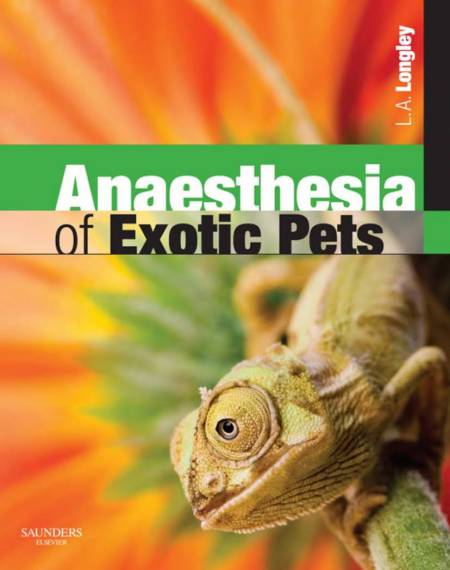Anaesthesia of Exotic Pets. Anaesthesia of Exotic Pets provides a unique and quick reference guide for all those working in veterinary practice.
Anaesthesia of Exotic Pets

The book covers the common species seen and includes: the basic approach to the case, equipment required, drug doses, and anaesthetic induction and maintenance as well as anaesthetic monitoring techniques. Peri-anaesthetic nursing care, such as husbandry, fluid and nutritional support, is discussed for each species. Written by experienced practitioners, the book provides a common sense and practical approach to anaesthesia to enable a variety of techniques to be performed confidently.
Covers practical information on anaesthesia for a successful outcome: how to assess and prepare the patient, lists of equipment required, how to perform the anaesthetic, husbandry, fluids and nutritional support Discusses commonly seen pathological conditions and their effect on the choice of anaesthetic and patient prognosis Provides an overview of the relevant anatomy and physiology in each species as this improves understanding of effects of anaesthesia and techniques used Describes both basic nursing and more advanced anaesthesia techniques, catering for all abilities and knowledge Contains tables of drug doses by species giving a quick reference for the busy practitioner.
Exotic animals are popular pets, and often present to the veterinary practice for evaluation and treatment. These species are varied anatomically and physiologically from the more commonly presented species. These differences will affect how the patient responds to handling, illness and anaesthesia.
WHY IS ANAESTHESIA NEEDED IN EXOTIC PETS?
Anaesthesia of animals may be necessary for two main reasons: to cause immobilisation to allow examination or performance of minor procedures (for example phlebotomy), or to perform surgical procedures humanely by causing loss of consciousness whilst providing analgesia, muscle relaxation and amnesia. The presence of each of these factors is dependent on the anaesthetic used, with local anaesthesia not causing unconsciousness and some general anaesthetic agents producing relatively little muscle relaxation. The requirements for these facets vary between cases and the clinician must consider what is necessary for the animal in question before selecting an anaesthetic regime.
Anaesthesia is required for many varied procedures in exotic pets. Certain species cannot be manually restrained without injury to handlers or stress to themselves, and sedation or anaesthesia is required even to perform a clinical examination. In other more amenable species, anaesthesia may be required for investigative procedures or surgery. If surgery is to be performed, analgesia should be provided. Analgesics will be briefly discussed, principally in the context of an aid to anaesthesia.
[expand title=” “]
[/expand]
Password: pdflibrary.net






